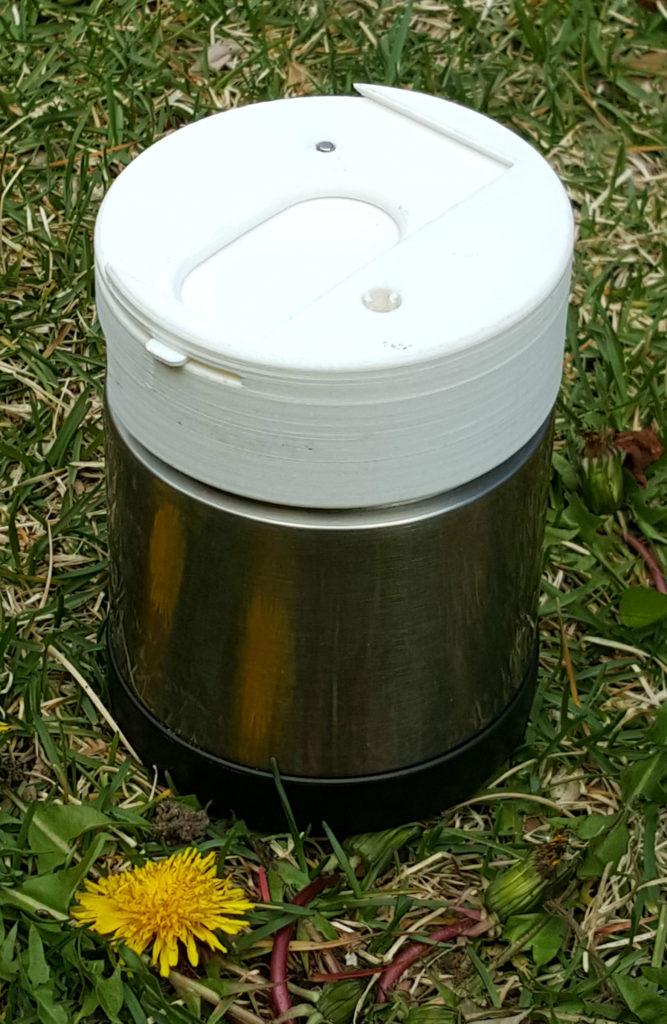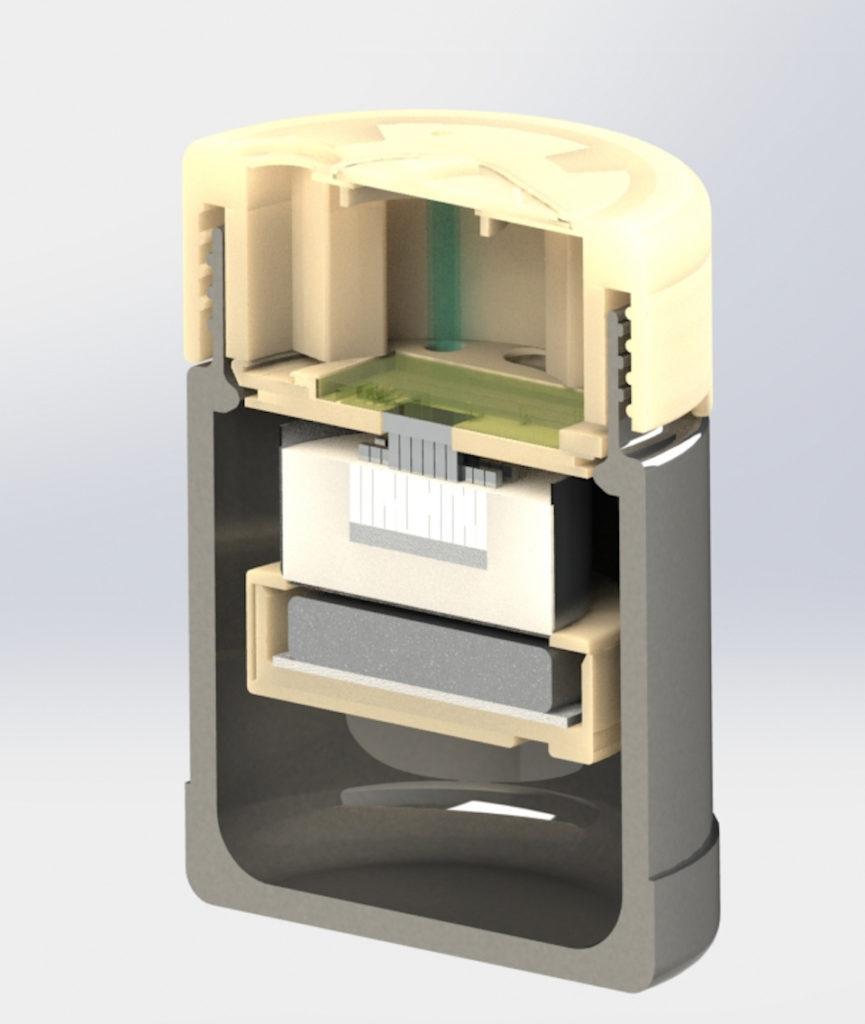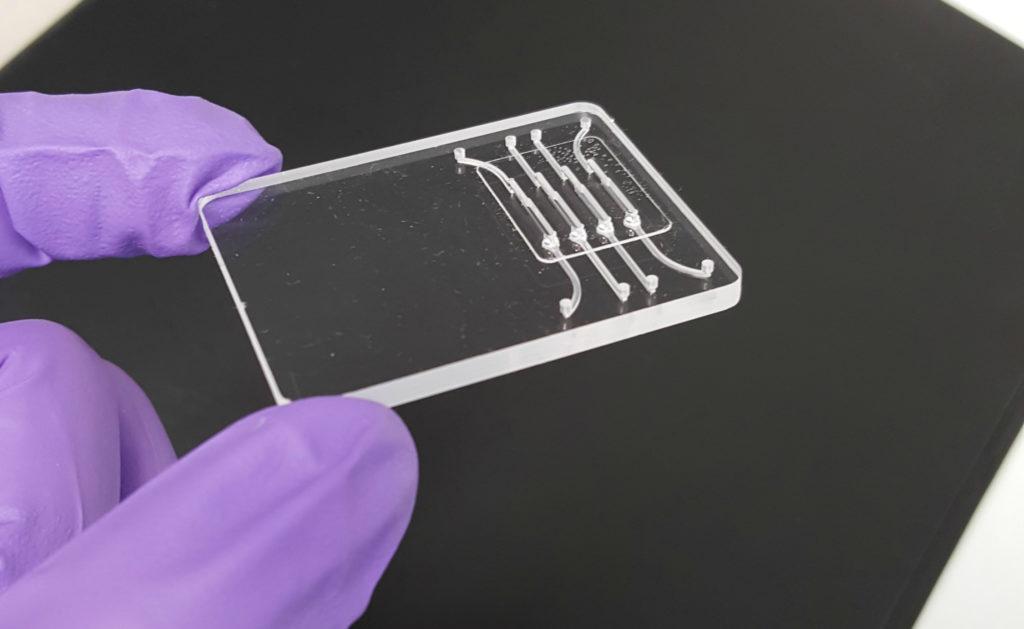 It looks like a small Thermos, but the partially 3D printed device invented by engineers at the University of Pennsylvania has a much more important function than keeping beverages warm or cold. The soda-can-sized device can detect the presence of the Zika virus, simply by testing a bit of a patient’s saliva. For a disease that causes few distinguishable symptoms, a tool that can detect the virus quickly and easily is a critical development.
It looks like a small Thermos, but the partially 3D printed device invented by engineers at the University of Pennsylvania has a much more important function than keeping beverages warm or cold. The soda-can-sized device can detect the presence of the Zika virus, simply by testing a bit of a patient’s saliva. For a disease that causes few distinguishable symptoms, a tool that can detect the virus quickly and easily is a critical development.
Several tests for the Zika virus currently exist, but each presents its own challenges and limitations. One method of testing involves the detection of antibodies produced by the body in response to the virus, but it’s an imperfect system, as a) a patient in the early stages of infection may not have produced enough antibodies to trigger the test, or b) someone suffering from an unrelated infection may produce antibodies similar enough to cause a false positive result.
The most effective tests involve the detection of RNA sequences from the virus itself, but these tests, known as reverse transcriptase polymerase chain reaction, or RT-PCR, require a lot of very delicate work with highly sensitive, expensive lab equipment. If the virus is present in a sample taken from the patient, it’s only detectable once it’s been amplified, or copied repeatedly, in a process that requires putting the sample through several very precise temperature changes. With thousands of potential Zika cases out there, a quick, simple test that can be taken into the field is desperately needed.
The University of Pennsylvania researchers may have found a way to simplify the temperature-change process, which has been the main obstacle in the development of a portable test. They looked into a procedure called loop-mediated isothermal amplification (LAMP), which eliminates the need for multiple temperature changes, requiring only that the sample be kept at one specific temperature.
It’s not quite that simple, though. LAMP requires more specialized primers, or gene sequences designed to match the regions of the virus’ DNA being targeted, than RT-PCR.
“Although Zika primers for RT-PCR have been published in the literature, LAMP primers have not,” said Haim Bau, Professor of Mechanical Engineering and Applied Mechanics and one of the study’s leads. “So, using data mining, we identified highly conserved regions of the Zika virus genome that are divergent from other known pathogens. We then designed appropriate primers to recognize this sequence.”
“In parallel,” added co-lead Assistant Professor of Mechanical Engineering and Applied Mechanics Changchun Liu, “we engineered a low-cost, point-of-care system that consists of a diagnostic cassette and a processor. The cassette isolates, concentrates and purifies nucleic acids and carries out enzymatic amplification. The test results are indicated by the change in the color of a dye, which can be inspected visually.”
The next challenge was to develop a way to keep the sample at the necessary temperature without using electricity. The solution? A Thermos, of course – with a few extra elements added, like a microfluidic chip holder and a special 3D printed lid containing a tiny drawer. Into that drawer was placed a small packet of magnesium-iron alloy, commonly used to heat military rations. The alloy is activated by adding water (which the scientists introduced through a small port in the 3D printed lid), causing a chemical reaction that generates heat.
 A saliva sample, taken from the patient, is placed into a cartridge and filtered through the device’s microfluidic chip, at which point the test takes about 40 minutes before the color change can be observed. The researchers carried out trials using their own saliva spiked with Zika virus samples from the lab of Assistant Microbiology Professor Sara Cherry, and discovered that the test’s sensitivity was equivalent to that of RT-PCR tests.
A saliva sample, taken from the patient, is placed into a cartridge and filtered through the device’s microfluidic chip, at which point the test takes about 40 minutes before the color change can be observed. The researchers carried out trials using their own saliva spiked with Zika virus samples from the lab of Assistant Microbiology Professor Sara Cherry, and discovered that the test’s sensitivity was equivalent to that of RT-PCR tests.
Additional testing will further determine the selectivity of the test, and the researchers intend to also test a version that utilizes fluorescent dye and an integrated smartphone camera.
“Our work represents a proof of concept at this stage,” Bau said. “Before the assay can be adapted for medical use, we must experiment with patients’ samples and make assure that our assay and system match the performance of the gold standard and operate reproducibly and reliably. We are fortunate to have dedicated colleagues in endemic regions ready to assist us in this task.”
Oh, and by the way – the entire device only costs about $2.00. The Zika virus situation is still grave, but with inventions like this, and with the ongoing process being made in the research of treatments, there’s reason to hope. You can read the full study here. Discuss this technology further over in the 3D Printed Zika Testing Device forum at 3DPB.com.
Subscribe to Our Email Newsletter
Stay up-to-date on all the latest news from the 3D printing industry and receive information and offers from third party vendors.
You May Also Like
Precision at the Microscale: UK Researchers Advance Medical Devices with BMF’s 3D Printing Tech
University of Nottingham researchers are using Boston Micro Fabrication‘s (BMF) 3D printing technology to develop medical devices that improve compatibility with human tissue. Funded by a UK grant, this project...
3D Printing Webinar and Event Roundup: April 21, 2024
It’s another busy week of webinars and events, starting with Hannover Messe in Germany and continuing with Metalcasting Congress, Chinaplas, TechBlick’s Innovation Festival, and more. Stratasys continues its advanced training...
3D Printing Webinar and Event Roundup: March 17, 2024
It’s another busy week of webinars and events, including SALMED 2024 and AM Forum in Berlin. Stratasys continues its in-person training and is offering two webinars, ASTM is holding a...
3D Printed Micro Antenna is 15% Smaller and 6X Lighter
Horizon Microtechnologies has achieved success in creating a high-frequency D-Band horn antenna through micro 3D printing. However, this achievement did not rely solely on 3D printing; it involved a combination...































